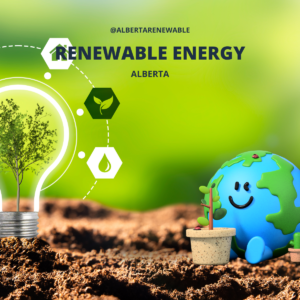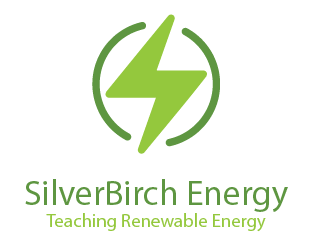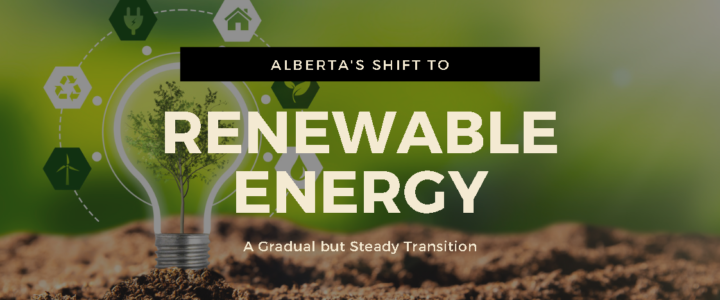Alberta, Canada’s transition to renewable energy is an exciting and encouraging development, given its reputation as a significant participant in the energy sector due to its vast reserves of oil and gas. As such, Alberta’s switch to renewable energy is not just a local issue, but a global one. The growing demand for renewable energy and concerns over climate change have driven Alberta’s transition towards renewables, which has been gradual but steady.
In 2020, Alberta’s renewable energy capacity increased by 15%, with solar and wind energy leading the way, according to the Pembina Institute. This growth is expected to continue as more businesses and individuals invest in renewable energy. The government of Alberta has set a target to phase out coal-fired electricity by 2030 and increase the province’s renewable energy capacity to 30% by the same year. Numerous measures and incentives have been implemented to encourage the adoption of renewable energy and achieve this objective.
The Renewable Electricity Program (REP) is one of the most significant efforts to promote the creation of new renewable energy projects. The program offers financial incentives to businesses that generate power from renewable sources, with a goal of increasing renewable energy capacity by 5,000 MW by 2030. Large-scale renewable energy projects have already been established as a result of the REP, including the Rattlesnake Ridge Wind Project, which is expected to produce 400 MW of wind power, and the Travers Solar Project, which will generate 465 MW of solar energy. There are also plans for many more renewable energy projects in the coming years.
 In addition to large-scale projects, Alberta has seen a surge in private investors and microbusinesses in renewable energy. The community of Raymond, dubbed the “Solar Capital of Canada,” has adopted solar power and installed over 1,300 solar panels on public and private buildings. This move has helped to reduce the town’s carbon footprint and cut energy costs for citizens. Green Energy Futures, a Calgary-based company, promotes renewable energy through a podcast and video series that highlights its advantages and showcases success stories of businesses and individuals who have made the switch to renewable energy. By emphasizing the benefits of renewable energy, Green Energy Futures is changing how Albertans perceive renewable energy.
In addition to large-scale projects, Alberta has seen a surge in private investors and microbusinesses in renewable energy. The community of Raymond, dubbed the “Solar Capital of Canada,” has adopted solar power and installed over 1,300 solar panels on public and private buildings. This move has helped to reduce the town’s carbon footprint and cut energy costs for citizens. Green Energy Futures, a Calgary-based company, promotes renewable energy through a podcast and video series that highlights its advantages and showcases success stories of businesses and individuals who have made the switch to renewable energy. By emphasizing the benefits of renewable energy, Green Energy Futures is changing how Albertans perceive renewable energy.
Despite these advancements, there are still obstacles to be overcome. The cost of renewable energy remains higher than conventional energy sources, although this is expected to decline as technology advances and economies of scale are realized. Moreover, the intermittent nature of renewable energy sources, such as wind and solar energy, poses another challenge. Improvements in energy storage technologies, such as batteries, are helping to address this issue, but backup power sources are still needed to ensure a reliable electricity supply.
The switch to renewable energy has economic as well as environmental benefits for Alberta. The renewable energy sector is expected to create new jobs and attract new investment, while the use of renewable energy can help individuals and businesses save on their energy bills, making it a cost-effective option in the long run. Moreover, the transition to renewable energy is crucial for combating climate change and ensuring a sustainable future.
In addition to promoting renewable energy, the Canadian government has implemented several programs to monitor and reduce emissions from traditional energy sources. The Multi-Sector Air Pollutants Regulations (MSAPR) regulate emissions of air pollutants from various sectors, including oil and gas, transportation, and electricity generation. The Emissions Performance Approach Program (EPAP) and the Asset Management and Planning (AMEP) program are designed to help companies reduce emissions and improve energy efficiency. The Methane Reduction Program (MARP) is focused specifically on reducing methane emissions from the oil and gas sector. Through these programs, the government is working to reduce emissions and improve air quality, while also encouraging companies to adopt more sustainable practices.
In conclusion, Alberta’s transition to renewable energy is a crucial step towards a more sustainable future, both locally and globally. While there are still challenges to be addressed, such as the high cost of renewable energy and the intermittent nature of some renewable energy sources, Alberta’s switch to renewable energy is well underway and gaining momentum. The growth of large-scale renewable energy projects and the adoption of renewable energy by private investors and microbusinesses demonstrate the feasibility of a transition from conventional to renewable energy sources. The commitment of the government, public, corporate, and individual sectors to invest in and promote renewable energy is necessary to achieve a sustainable future and combat climate change.

